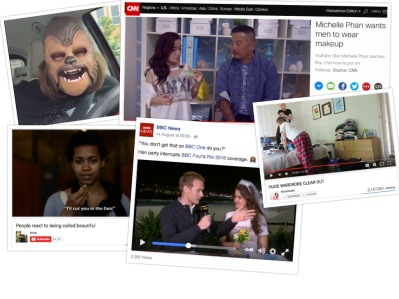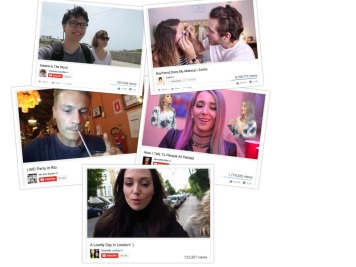
I love authentic video! A lot has been said about its use as a classroom tool and I couldn’t agree more. Videos are fun, engaging and they can provoke the most exhilarating reactions.
On the other hand, in my opinion, the way to approach authentic videos has yet to be properly developed. We teachers should aim to use video as if it were being watched outside the classroom. Make it relevant to our students’ daily lives.
By the way, I was inspired by Marek Kiczkowiak’s amazing blog post on how to design authentic tasks for listening and reading resources.
Do we really need to create a worksheet of exercises with filling in the blanks, true and false or order the events? What’s the point of this? These tasks are rather boring and not meaningful.
Instead, we should ask ourselves: If my students were to watch this video outside the classroom, how would they react to it? What would they say or do? All tasks I propose be done in class are how we attack a video in real life.
Why you should use authentic tasks with video
Bite-sized video

Why? They’re great, short and straightforward. You can find this type of video on Facebook fan-pages, in the “video” section. Also try CNN, Entrepreneur or BBC Culture, for instance.
Tasks
Facebook Live

Why? These videos are non-scripted, spontaneous and full of real communication including fillers, hesitation, paraphrasing and emotional language. Think about the Chewbacca Mum which was the most viewed Facebook live video, watched over 160 million times. Your student has probably watched it as well.
Tasks
Social Experiments/Documentaries

Why? They are great at provoking reactions and judgements from both the viewers and participants.
Tasks
Vlogs

Why? Vlogs are quite popular among teenagers and young women. Their titles are usually sensational, intriguing, outraged or just provocative; vloggers are smart enough to pique viewers’ interests by luring them into clicking. You can find vlogs of different subjects: travel diaries, make up, fashion, random stuff, cooking, DIY projects – you name it.
Tasks
How about you? Do you have any other authentic activities or tasks you would like to share? I’d love to read your comments on it.



Lovely! I liked your tips in how to use each type of video, Cecilia! 🙂 Thank you!
LikeLike
I’m glad, Ju!
LikeLike
I just have one question: If I want to work with “Passive Voice” (for example) what is the best way to search for a video to work with this topic? Sometimes, just typing “passive voice” doesn’t help at all rsrs
LikeLike
No, I don’t think so…I would go for a video which tells a story, a narrative. News works well for that purpose 🙂
LikeLike
[…] You can read more information about it in this link. […]
LikeLike
Not sure any of those tasks are as thorough as more commonly used worksheet tasks. Authenticity is one thing, effective and intensive exploitation may be another…
LikeLike
Thanks for your comment, Steve. I believe it all depends on the objective of your task – there is room for worksheets, but I wouldn’t base a lesson on single one. I’d love to know what ideas you have for effective and intensive exploitation ( of a reading text? video? ) 🙂
LikeLike
Hi. I have masses of them on frenchteacher.net in the Teacher’s Guide pages. On the Samples page there are more. Nothing startlingly new (not sure how many ideas are left!), but tried and tested. We cover some of this in our book The Language Teacher Toolkit (Amazon) and I’m working on another book for Routledge right now.
LikeLiked by 1 person
[…] or 45-minute drama episodes are not the only way to watch in English. My colleague, Cecilia Nobre, recently wrote a post for teachers on how to use video in the classroom. She gave examples such […]
LikeLiked by 1 person
Thank you, Cecilia for sharing your amazing tips with us. I loved it! ❤
LikeLike